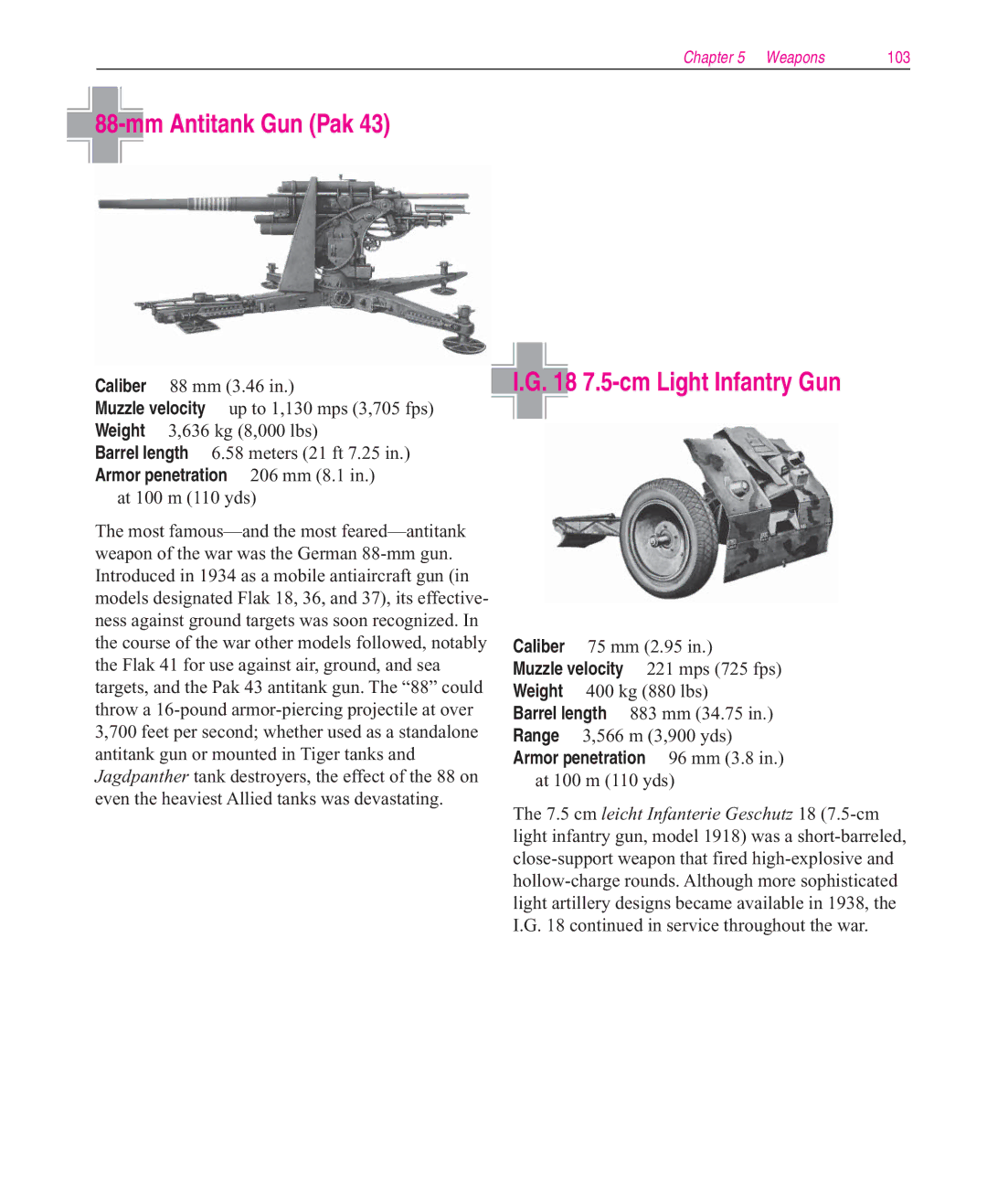
Chapter 5 Weapons | 103 |
88-mm Antitank Gun (Pak 43)
Caliber 88 mm (3.46 in.)
Muzzle velocity up to 1,130 mps (3,705 fps) Weight 3,636 kg (8,000 lbs)
Barrel length 6.58 meters (21 ft 7.25 in.) Armor penetration 206 mm (8.1 in.)
at 100 m (110 yds)
The most
I.G. 18 7.5-cm Light Infantry Gun
Caliber 75 mm (2.95 in.)
Muzzle velocity 221 mps (725 fps)
Weight 400 kg (880 lbs)
Barrel length 883 mm (34.75 in.)
Range 3,566 m (3,900 yds)
Armor penetration 96 mm (3.8 in.)
at 100 m (110 yds)
The 7.5 cm leicht Infanterie Geschutz 18
